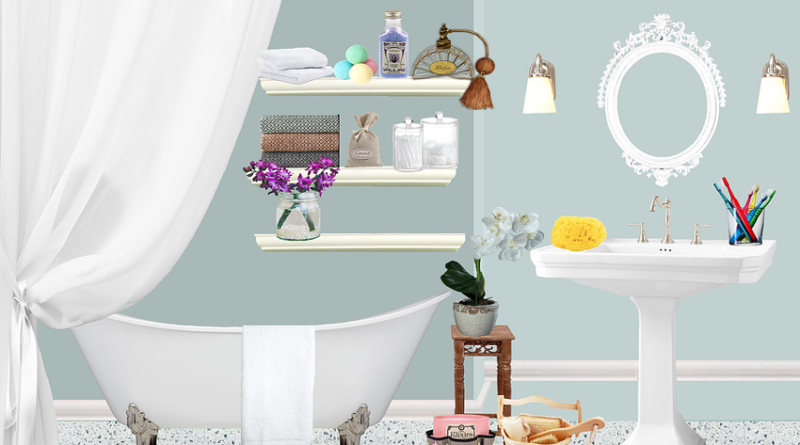How to Put Some Vintage Touches on Your Bathrooms
Vintage chic has gone from being a hipster trend to genuine decorating style. It allows you to bring a little nostalgia into your home and express your quirky side. This is especially effective in bathrooms, because it’s a mundane room and vintage look will make it seem more classy and elegant.
When it comes to recreating a bygone era, the devil is in the details. You need to stay committed and find the right materials and the right fixtures – faking it isn’t going to cut it.
Flooring
Start your remodeling from the ground up and get authentic wood floors, which were quite popular in the 1900s when indoor bathrooms were a novelty in themselves. A highly-polished wood floor is also much easier to clean. Making this choice doesn’t mean you have to go a century back in time – modern heating options would still be available underneath the wood floor. Hexagonal marble tiles would go nicely with that, but they’re not cheap. Some artificial material with a marble print is also available and it’s much less expensive. If you want full Art Deco experience, make the tiles really bright and intense.
Fixtures
Detached fixtures were once the mark of true elegance and in a way, they still are. Try installing a pedestal sink. These sinks come in two parts and they most often require a professional to install. The design depends on what era are you trying to evoke. Curvy, decadent designs are emblematic of Victorian times while boxy and larger sinks come from Craftsman period (immediately following the Victorian era). Choosing this kind of sink will mean you’ll have to let go of some space and maybe think about getting a vanity.
The Tub
The bathtub is the centerpiece of any bathroom. It will define the whole style. If you’re going for vintage and luxuries try getting the clawfoot tub. Old porcelain tubs could easily be repainted and brought to their former glory. On the other hand, emergency plumbers say that the authenticity of the tubs themselves isn’t the problem. It’s much harder to get the right materials for the plumbing. Chrome and other modern materials are really noticeable in a vintage setting. It’s best to stick to copper, wrought iron or oiled bronze. They are a bit harder to find, but that’s the price of having a great bathroom.
Color palette
Choosing the right color palette can be tricky because lighting really affects it and modern lights are quite different from vintage ones. An odd color combination can work really well in a vintage environment. For instance, green and black work well together. Black ornaments stand out on light green tile background. If this is too weird for you, you can always go with plain white with the touch of bronze around the edges. It’s simple, elegant and authentic.
Cabinets
Once you’re done with the big stuff you can focus on adding all the details which bring the era to life. Good thing is that even if you didn’t find the perfect tub or an authentic sink, smaller objects can make up for that. This is especially true if they are carefully chosen and meticulously restored. Start with the wooden cabinets. With varnished wood, you can really see the beauty of the craftsmanship. Cabinets weren’t really a thing in Victorian times, so if you want true authenticity (and you have space for it) go all the way and install shelves.
Accessories
This is the only part of your vintage bathroom that shouldn’t feel old. Deciding on elegance (or even decadence), with your accessories serves two main goals. First of all, it enhances the rustic feel of your design and second – it allows you to enjoy all the modern comforts while having a bathroom straight out of the 1920s. Get the cotton towels and a silk bathrobe, find a way to hide a stereo in there – basically, spoil yourself. In a way, it’s also an homage to the era because those who had indoor plumbing at the turn of the century were enjoying the height of luxury.
The key to putting together a vintage bathroom isn’t always about historical accuracy. It’s about understanding the aesthetic of the era you’re trying to emulate. That’s what makes this project more than a simple remodeling job. There’s an art to it.

